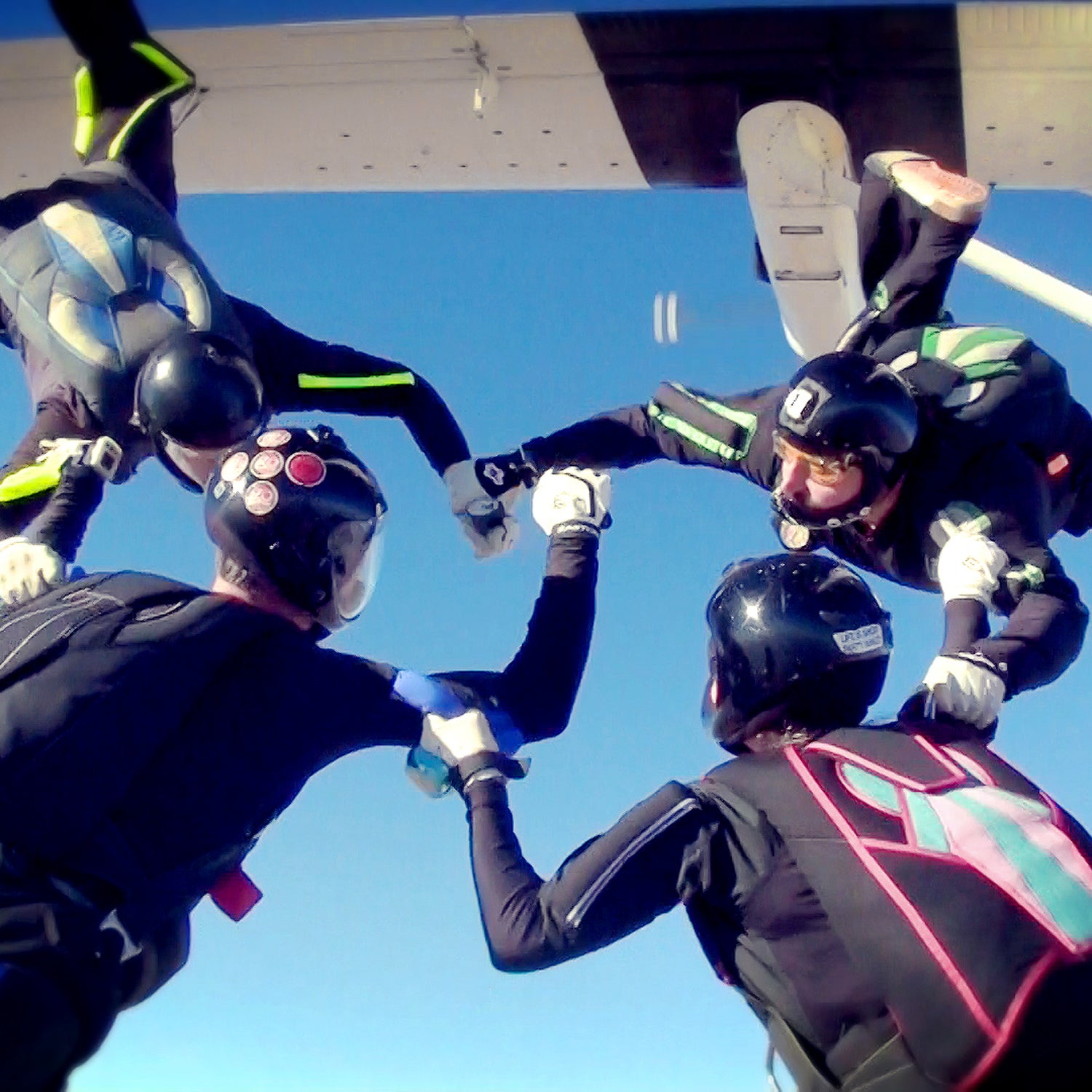A good chunk of was filmed at terminal velocity. That makes sense, since it’s a documentary about competitive skydiving, but it doesn’t make the filmmaking any less impressive.
Director Jason Schumacher was drawn to the sport—yes, competitive skydiving is a sport, with a , judges, and a —after realizing just how creative a videographer could be in free-fall. He found himself wondering, what’s the best way to watch a freestyle skydiver spin like a top, ballerina-style, mid-air? (The answer: Get a cameraman to .)
Stomach-dropping footage makes for good entertainment, but Schumacher knew he had a full-length documentary on his hands when he started asking what makes competitive skydivers tick. Every year, about 400,000 people skydive for the first time; only about two to 5 percent of those people ever try it again. What, Schumacher wondered, makes a person want to jump out of an airplane not once, not twice, but thousands of times?
The documentary, slated for a May 1 release, follows a team of four competitive skydivers as they work their way through in the U.S. Parachute Association national championship. Last week, we talked to Schumacher about filmmaking, the intricacies of falling out of the sky competitively, and how to not die as a professional skydiver.
OUTSIDE: So, how do you shoot a film while falling 122 miles per hour?
SCHUMACHER: Four-way competitive skydiving is really interesting because it’s the only sport where your videographer is a part of your team. It used to be that the judges would view the team from the ground with these enormous telescopes and they’d just get one shot to judge. Now there is a fifth member of each team. He films from above, he jumps right after the team and he has to keep them in the shot. They go right into formation and he has to be right on them as they hop out.
That’s wild.
The interesting part, as a filmmaker, is that the cameraman gets to operate in 360 degrees. That’s something very freeing for the videographer. It’s not just pan or tilt or use a dolly—you can flip upside down and spin around your subjects, above them, underneath them. That’s what ultimately hooked me, seeing this incredible way to film something.
For freestyle jumps, the approach is to keep the person focused in the frame. But the skydiver can move and the world moves around them. So they may both be upside down together and then both roll at the same time, and the world will flip around them.
Before we go on, can you lay out for me (us?) just what competitive skydiving is? I don’t think most people have heard of it.
It’s a lesser-known sport because it’s hard to view as a spectator, but they have all kinds of categories to compete in. In four-way competitions, which we focus on, it’s all about how many different formations four skydivers can do in the allotted time. You get about 45 seconds before you have to pull your chute. You have to do as many formations as you can and do them well—make sure each grip connects before you move and get into the next position. Since they’re falling, they have to be well rehearsed and communicate non-verbally with a nod of the head or move of the leg to let teammates know where they’re going to next.
Nobody has microphones or any other way to communicate? (Consider cutting this, it is kind of surprizing, but not like OMG I can't believe it— and its covered in the above graf)
No.
How do you practice a sport like this?
They practice a lot in the air, but before, they practice a lot on the ground on what they call creepers—a skateboard kind of thing where you can roll on your belly and make the formations you’re going to make in the air. And do that while you have a coach there.
What are competitive skydivers like, as people?
They’re not just thrill-seeker types. It’s the excitement and the free-fall that gets people interested initially, but it’s the [question] of what else can I do next, what else can I do in the air, that hooks you. Once you get over the excitement of falling, it becomes more about manipulating my body to fall in different ways and interacting with my friends while we’re in the air.
I was kind of more interested in personality types—the kind of people who don’t just skydive once or twice as a bucket list kind of thing, but skydive 1,000, 2,000, 6,000 times. Some of the most experienced members on our team have 6,000 jumps.
So it's not just an adrenaline thing?
Some of the team members would say they aren’t adrenaline junkies. Some of them find it very calming being up there in the air and having a view of three or four states around them, seeing the whole world and falling.
In the trailer, we learn one of the competitors is afraid of heights.
Yeah, she is very afraid.
How does that work?
You know, I’m not sure. I guess it’s sort of face your fears—times a thousand.
Right. On that note, how dangerous is all this?
As I understand it, it’s fairly safe—the equipment itself is safe and if you prepare and double-check yourself, it’s very safe. What usually happens when someone gets hurt is what we call operator error.
Does that happen often?
One guy, in the original lineup of this team, did get hurt. He was using a parachute that he wasn’t experienced with—and this was a jump on his own, not competition—and he basically hit the ground too steeply. Basically, he hit the ground hard and rolled and suffered a brain injury and was in a coma for, I believe, three weeks. He works at the drop zone now, but he hasn’t sky dived since.
You’re still falling from the sky, but some of the skydivers will tell you they feel more scared driving around on an icy afternoon than jumping out of a plane.


